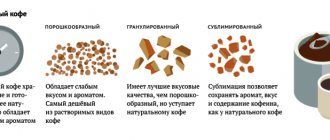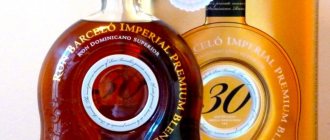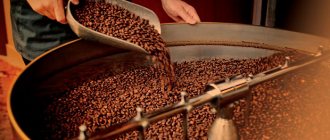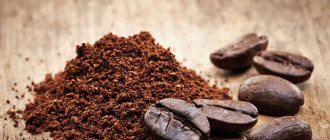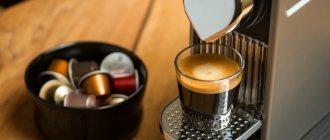Let's find out why coffee sours and what to do about it. Invigorating espresso has a bitter and tart taste. But sometimes, after drinking a cup, you feel a piquant, sour note in your mouth. A slight sourness indicates the quality of the coffee. But if the taste is too sour, then the drink is of low quality. The appearance of the aftertaste depends on the variety and storage method of the beans, the roasting method, and the quality of the water. And also on whether you follow the cooking technology.
What determines the intensity of sourness?
Berries for elite varieties of sour coffee are produced in the highlands, where the lack of oxygen affects their ripening period, which, accordingly, increases. Thanks to longer cultivation, the berries get a richer and brighter taste. Moreover, the higher the area where coffee trees are grown, the more sourness will be felt in the coffee (if it is roasted and prepared correctly). It turns out that this feature is considered an indicator of the high quality of the drink.
The way coffee is processed can also affect its “acidity.” For example, "Washed" or "washed" processing will retain much more acid in the beans, compared to those that are processed in another way - "Unwashed" or dry method.
Roasting also creates its own sourness. Everything is simple here: the lighter the beans from roasting, the more acids remain in them, and when grinding and further preparation they pass into the drink itself. It is worth remembering that if the beans are dark during the roasting process, the coffee will be less sour, but, most likely, there will be hints of bitterness in it.
Other reasons
Mold in the coffee maker
Wet pulp constantly gets into the coffee brewer container with waste. If the compartment is simply shaken out, it will have a high humidity of 75%.
Due to the remaining moisture in the drink, mold appears. It causes a sour taste. Poisoning is possible.
Wash the container with the cake and wipe it dry every time after brewing the drink. Once a week, thoroughly clean your coffee maker using professional cleaning products.
Find out about other cleaning options in the article “How to properly descale a coffee maker at home.”
If you have purchased a professional machine, the article “Review of descalers for coffee machines” will help you.
Interesting! What is a French press and how to brew coffee in it, recipes for preparing the drink
Overdue
Coffee beans deteriorate if stored improperly.
Ground coffee berries are stored in a cool place in a hermetically sealed container. The following are harmful to them: sun, prolonged exposure to air, or hot weather.
Under the influence of negative factors, the content of aromatic oils in coffee berries decreases. They change the taste and begin to sour.
What else to expect from expired coffee is described in the article “Can I drink expired coffee?”
Storage conditions
Over time, the grains lose their richness and deep aroma. The longer you store them, the worse the coffee turns out.
Ground grains spoil faster. Even if you comply with storage conditions.
The more time has passed since the beans were roasted, the less caffeine they contain. Therefore, you won’t be able to cheer yourself up with a hot drink.
To ensure that the aromatic delicacy retains its properties and does not sour, consider the shelf life. After opening the package, use its contents within two weeks.
Find out more in the article “How to store coffee beans at home.”
Which coffee is sour - Arabica or Robusta?
It should be remembered that sour flavors can only be obtained from Arabica beans. Accordingly, in blends of Arabica and Robusta, the amount of the former will affect the “acidity” number. It turns out that the higher its content, the richer the taste of acid in the finished mixture, and if there is more robusta, then such a taste will barely be visible.
It is worth remembering that a Robusta drink will never be sour, except for the Guatemalan variety, which still contains a small amount of Arabica. By the way, if you choose 100% pure robusta, the final drink will always taste bitter.
Background of sour taste of coffee
Arabica coffee, especially those grown high in the mountains, imparts a slight sourness to the consistency.
Robusta - untainted - gives the drink bitterness without the slightest sign of pungency and acidity, untainted Arabica - will be softer and significantly more sour. Arabica contains more than 30 different natural acids - from orange to specifically caffeic. Gourmets can distinguish an unlimited number of flavors in good coffee varieties - grape, apple, nut. In other words, the presence of Arabica beans in the consistency will be guaranteed to impart sourness to the drink - from barely noticeable to pronounced.
Reference. Acids are destroyed during heat treatment, which is why deep-fried black zarnas can be completely tasteless. Light ones, accordingly, will have a more pronounced smell.
There is also sourness in coffee, the beans of which have been washed hot before drying. In most cases, these are cheaper varieties, because the “dry” production method is more expensive.
An unpleasant taste usually arises as a result of making a drink in violation of the rules or storing it in an open container next to supplies of cereals, vegetables or household chemicals.
Mold that appears in the coffee maker has a very bad effect on the smell of coffee, because the fungus really loves the wet organic environment and oils remaining on the walls. In order to avoid this difficulty, you need to:
- carefully wash the Turk, press or coffee maker after each use,
- frequently shake out the remaining used coffee from the container and wash the drain hole,
- Once a month, rinse all containers of the coffee maker with a weak substance of soda.
It is also worth following the nuances - do not pour ice milk into hot coffee, do not use unwashed cups and drink the drink immediately after making it.
Coffee varieties without sourness
Lovers of a bitter, rich taste without sour notes are recommended to drink a drink that contains 100% robusta. And if you want to drink espresso, which almost always has a tart natural taste, it is better to choose strong varieties of coffee with bitterness, which contain more caffeine.
When choosing a variety without sourness, you should focus on its characteristics, geography of origin, and degree of roasting. After all, taste depends on these parameters.
Today we can distinguish the following varieties without sourness:
- Mojdiana, Brazil - the taste contains notes of chocolate with cherry aroma. It is usually chosen by those who prefer a sweet and rich drink that is free of impurities.
- Yellow Maragogip, Brazil. It contains a unique bouquet of sweetness and rich aroma.
- Maragogip, Nicaragua. It has a high caffeine content. Many people add alcohol or milk to it, because it goes perfectly with these additive options. In coffee of these varieties, notes of cocoa and spices are felt.
- Robusta Cherry, India. It has a deep, rich composition. An ideal variety for espresso due to its increased strength level.
Cooking features
Some lovers, on the contrary, prefer to drink a sour drink. In this case, they should take a closer look at light and fresh roasted beans. This type will give the desired acidity and will have a rich aroma.
As practice shows, coffee from a coffee machine has the highest acidity. In the first seconds of operation of the machine, espresso has the most obvious sour notes. Next, the drink is filled with other shades of taste (sweet and bitter).
This feature of hardware coffee preparation can play into the hands of those who do not like sour coffee. In this case, you need to wait a couple of seconds after the start of cooking and only then place the cup under the source. This will help skip the most sour drops of the drink and add only the desired flavors to the cup.
This method is good for those who are categorically against acidity in the drink, but are calm about the lack of a rich smell, because all the essential oils are contained in the first drops of espresso prepared in a coffee machine.
Another method for preparing coffee with sour notes is to brew it in a French press. It usually takes several minutes to prepare coffee, which results in the product being in contact with hot water for a long time. During the brewing process, a large amount of acid is released, which in some cases can spoil the taste of the drink. This coffee also contains more caffeine, so people with cardiovascular disease should use this product with extreme caution.
Coffee prepared by passing water through a filter, on the other hand, has a milder taste. After drinking this drink, your mouth will not be sour.
Instant coffee with and without sourness
Now there are 3 types of instant drinks: powder (the cheapest), granular, and also sublimated (most similar to natural, but more expensive). The more manufacturers save on its production, the fewer real coffee beans it contains.
It is worth noting that about 50% of green grains are processed into instant. Most often, the cheapest varieties are chosen for this: low-grade Arabica and Robusta. Moreover, the grain content also varies.
Instant coffee can contain only Robusta or Arabica, or a mixture of both. Accordingly, the acidity of the instant drink will be influenced by the amount of Arabica it contains (as well as its quality).
Do you like sour coffee?
Yes
No
Our tips and recommendations
Operators of the A-Iceberg SC often receive calls from owners of household coffee machines who complain that the drink is too sour. Moreover, in many cases the unit is in good condition, and the occurrence of a malfunction is due to the inattention of the users themselves or non-compliance with the cooking rules.
We have prepared for you some useful tips that will help you fix the problem yourself without calling a technician.
- Choose varieties that contain a minimum of natural acids. It is better to choose 100% Robusta or a blend with a minimal amount of Arabica.
- You should pay attention to the degree of roasting: the longer the heat treatment occurs, the more natural acids are destroyed.
- Follow the manufacturer's recommended proportions between water and coffee.
- Low brewing temperatures can cause an increase in acidity.
- Warm up the cups you use in advance. This way you can avoid sudden temperature changes.
- Check grind settings. If it is too rough, the coffee often turns out sour.
If everything is in order with the settings, but the taste remains bitter, then individual equipment modules are faulty. Do not try to diagnose and repair the coffee maker yourself, as you will most likely aggravate the situation or render the device completely unsuitable for repair. The best solution is to call an employee from the A-Iceberg service center, who will arrive at a pre-agreed time and fix the breakdown within 1-2 hours.
How to choose bean coffee with minimal acidity
A drink made from Arabica varieties that are not grown in the highlands will have the least sourness. Indeed, many people recognize this type as the standard of the best coffee. The following varieties also have a minimum amount of acid:
- Brazil Santos, grains do not grow in the highlands;
- India: Malabar Monsoon, which is processed by the Unwashed method;
- Nepalese, almost all grains contain only a small degree of acid.
Why is coffee sour?
Sour coffee is made from a variety of coffee beans called Arabica. This variety is considered the highest quality and most expensive. Typically, coffee plantations are located high above sea level, which affects the amount of oxygen in the air. In such conditions, the fruits ripen for quite a long time, which gives the crop a rich, tart taste. This gives the drink sour notes.
Manufacturers are trying to diversify the percentage of Arabica coffee in the product in order to neutralize the unpleasant feelings after coffee. You can look for products with a high content of robusta. They usually lack acidity. Using the experimental method, you can select the best percentage of different species.
But it is recommended to keep in mind that coffee made 100% from Robusta can have a strong bitterness.
The intensity of the sour taste depends on how high in the mountains the region where the raw materials are fed is located.
Scientists divide acidity into a number of types:
- The sourness inherent in cocoa fruits. This species is grown in Nicaragua.
- Citrus taste. This type includes orange and lemon notes. This product grows in Costa Rica.
- Grape flavored colors. A species with such acidity is brought from Yemen and Mexico.
The sour taste after coffee in almost everything depends on the degree of roasting. As you know, there are three degrees of roasting: light, medium and black. Light roasting retains all the initial characteristics of the product. During the manufacturing process, all the acids are transferred into the drink, so after consuming this type it becomes sour in the mouth. Black roasting removes excess acidity from the product. But when choosing such coffee, it is recommended to keep in mind that the deepest processing of raw materials can give the drink a bitter taste.
The taste is also affected by the processing of the coffee beans. If the raw materials are washed beforehand, then during the upcoming processing the sour taste becomes more intense. The dried method of preparing coffee for production removes sour notes.
How to make regular espresso taste better
If a person does not like the taste of traditional espresso, you can add alcohol to it:
Espresso con panna is also popular:
- First, the traditional version of the drink is brewed. It is poured into a separate cup.
- Place a “cap” of whipped cream on top of the thick foam. If desired, you can additionally add a little chocolate chips to the Con Panna espresso.
Liqueur, brandy or sambuca are added to espresso corretto. The inhabitants of the northern part of Italy are accustomed to drinking corretto with grappa in the morning.
Grappa is a type of brandy. The strength of the alcoholic drink is approximately 40-50%. It is made from the remains of grapes preserved after the end of the wine season.
Fans of sour espresso can treat themselves to Romano, which has a distinct lemon flavor. Espresso Romano can be prepared at home. To do this you will need the following ingredients: • 7 grams of ground coffee; • 35 ml water; • lemon zest or lemon slice; • 5 ml lemon juice.
First, espresso is brewed in a coffee machine. You can simply pour 7 grams of coffee powder into a pot, pour 35 ml of water and put the dish on the fire. As the coffee begins to boil, the Turk is removed from the stove. The espresso is cooled and brought to a boil again. After the Romano has cooled, add lemon juice. The finished espresso-romano is poured into a previously heated demitasse cup. Before serving, it is decorated with lemon zest or a slice of lemon.
In conclusion, it is recommended to note once again that acidity in almost everything depends on the type of coffee. Robusta has a milder taste. The taste of natural Arabica is quite sour.
Types of coffee. Varieties. Roasting. Caffeine..
Start over. So, with all the abundance of coffee trees, there are only 3 food species:
Arabica is the most whimsical, difficult to care for and produces a measured harvest, but at the same time the most valuable species, Arabica varieties that grow from 700m above sea level are especially valued; such coffee, according to the definition of the International Coffee Association, is Specialty according to our guest - “Premium” Robusta is not whimsical, disease-resistant, larger grains, more porous, simply characterized by an excess of caffeine and very high acidity. It is for this reason that Robusta is now rarely used on its own. But when combined with Arabica, the result is an impeccable espresso blend. Liberica - this type is used only (!) for honey purposes.
So there are only 3 types of coffee, but there can be a huge number of types.
Arabica in detail. Arabica can be cheap, which grows like Robusta, practically anywhere, or it can be, as we already know, of the “Premium” class. And now in more detail why this happens. The best Arabica begins to grow from 700m above sea level, it has super-hard grain. This is achieved by distinguishing between day and night temperatures. In the homeland of coffee, Kenya, Arabica grows at an altitude of at least 1900m above sea level! In Ethiopia also from 1900-2500. That’s why coffee cherries (that’s what coffee berries are called) are already sooo hardened from the very beginning.
We found out at what altitude the best coffee grows, but we must not forget that there are very few places where coffee trees produce two harvests a year, in most cases one, while 9(!) months pass from flowering to ripening, Can you imagine?! Now let’s talk about how it is collected and processed (by the way, this greatly influences its final cost). Premium class Arabica beans are collected only by picking (i.e. by hand) the most ripe and healthy coffee cherries, after which wet or dry processing is done. During dried processing, the grain is placed in peeling and shelling machines to remove the shell from it. With this method, the grains can be scratched and chipped, which significantly reduces its price. The wet method is more expensive, especially in the highlands, and takes longer. With it, the grain is first soaked, and then placed in a special peeling machine, where, together with water, all excess is washed off from it. After which the grains are scattered under tents for drying and every 3-5 hours they are rustled with special rakes.
Recommendation No. 1 It is better to take coffee in beans, because... the beans can tell us a lot right away: they must be the same size, color (except for the consistency of Viennese, French or Italian roasting, there may be a slight difference in color), the freshest coffee beans - they are oily, fragrant and most importantly without chips!
About varieties. We know that there can be a huge number of species, because... Coffee trees grow virtually all over the world. For convenience and simplicity, many companies name varieties by country of origin. Without further ado, I will characterize the species as they were characterized by experts at one time for our company.
Africa: Ethiopia - coffee, with its gentle scent of a flower bouquet, confirms the legend about the birthplace of coffee.
Kenya - coffee grown on volcanic soils with high iron content. The royal taste of this coffee with a pronounced citrus color is for the most discerning.
South and Central America Colombia is a coffee that has a rich, rich flavor aroma with the color of prunes coupled with a special sourness.
Costa Rica - the appropriate strength and richness of the drink with a strong strong taste, a persistent aroma and rich flavor colors.
Brazil has a balanced, soft taste with a slight bitterness and a good aroma.
Guatemala – the astringency and richness of this coffee, and the faint color of the smoke reflects its growth on volcanic soils.
Nicaragua is a coffee with a finely balanced flavor and a pleasant aftertaste.
Honduras - has a pronounced smell. This coffee, with the corresponding richness of the drink, is widely used to make coffee consistency.
Nicaragua Maragogipe - has the largest grains and extraordinary taste.
Indonesia Sumatra - coffee from the exotic island of Sumatra, has an appropriate and rich taste and aroma, with a light spice color
Java – coffee has a special rich taste, low acidity (not to be confused with acid in taste)
Sulawesi is a drink for lovers of a thick and catchy taste; the smell contains floral tones and a slight sourness.
Flavored coffee (well, that's right, indulge yourself, I don't like flavored coffee myself) Bavarian chocolate - coffee for those with a sweet tooth Irish cream - with the famous taste of Baileys liqueur. Amaretto is the familiar taste of almonds. French Vanilla – the sweet smell and taste of vanilla. Hawaiian Nut – Hawaiian and Brazil Nut scent. Hazelnut – coffee with the color of a nut in the taste. Chocolate almonds – a delicate nutty-chocolate taste. Reddish orange is the most exotic coffee
Espresso consistency Professional espresso is an impeccable espresso - a mixture of the best types of high-quality Arabica (80%) and Robusta (20%), creating a perfectly balanced drink with stable coffee foam. Italian espresso is a traditional combination of Arabica (90%) and Robusta (10%), and special roasting gives this drink a rich smell and taste, thick with a catchy bitterness, a persistent aftertaste reminiscent of sunny Italy. Espresso Jakarta! – a mixture of the best types of Arabica (85%) and Robusta (15%) from various countries of growth. With a slight bitterness and a persistent aftertaste. Espresso "Chaikoffsky" - universal espresso blend
Decaf - decaffeinated coffee
The rarest varieties of AustraliaSkybury - exotic coffee from the very edge of the world.
Yemen Matari is the best coffee, with an extraordinary, rich taste, a light chocolate color – its well-known aftertaste. It is often called “Coffee of the Lords”, as it is prestigious and rare.
Galapagos is a rare and unusual variety of coffee of very high quality, soft. Coffee is made in limited quantities on the San Cristobal Peninsula.
Ecuador Vilcabamba – perfectly balanced, with an amazing aroma, unusually soft.
Monsund Malabar (India) – the best quality monsoon coffee. Connoisseurs consider this type of coffee to be a drink with a unique taste.
Jamaica Blue Mountain is one of the finest, rarest and most valuable species growing in the world. "Royal Coffee"
Accumulate Luwak - coffee for real gourmets, one of the most expensive exotic varieties. The soft, refined taste of this coffee gives the drink a distinct feature and uniqueness. "Coffee for aristocrats"
Varieties with sourness (I give them in order from the most sour to almost neutral) Kenya Sulawesi Costa Rica Colombia Nicaragua Guatemala
In fact, all other varieties, except Java, Sumatra, Jamaica, and Accumulate Luwak, have a weak or pronounced bitterness. Brazil, like Nicaragua, can be classified as neutral varieties; flavored coffee is created on their basis, as well as many espresso blends.
More by variety: Vienna roast - gives a slight bitterness, this consistency of Arabica contains beans that are mainly Viennese roasted. French roast - the mixture has a bitter and creamy taste. Italian roast - the mixture has the most pronounced bitterness. The most rich and dense drink comes out. It is very suitable even for holder-type espresso coffee makers (i.e. with a coffee cup).
Types of roasting: https://www.perfect-coffee.ru/rules.php?l=1&part=1&art=4 I would like to add that not only the taste of coffee, but also the caffeine content in the bean depends on roasting. The stronger the roast, the less caffeine is contained in the beans.
What is caffeine and what does it do? CAFFEINE, a psychoactive stimulant with a bitter taste, without aroma. The effects of caffeine appear very quickly, within a couple of minutes after consumption. By influencing the central nervous system (brain and spinal cord), caffeine increases breathing, increases the frequency and strength of heart contractions, speeds up metabolism, and thereby makes you feel alert, relieves lethargy and drowsiness. Caffeine also has a diuretic effect and causes constriction of blood vessels, which determines its ability to relieve migraines caused by dilation of blood vessels in the head. In addition, it increases muscle tone and improves coordination of movements. In large doses, such as the amount contained in 4 cups of coffee drunk over a short period of time, caffeine causes anxiety, insomnia, irritability and migraines. People who frequently drink more than 5 cups of coffee a day become addicted to it, and when they stop drinking it, they may experience withdrawal symptoms: irritability, dizziness, migraines and weakness. Caffeine is destroyed in the body and eliminated within a few hours, so its direct effect is short-lived. However, although this has not yet been fully confirmed, consumption of caffeine in large doses over a long period of time can cause coronary heart disease, high blood pressure and certain congenital defects in offspring.
Caffeine is found in many widely used drinks. An ordinary cup of coffee contains about 100 mg of caffeine (a cup of decaffeinated coffee contains less than 5 mg); in a glass of tea or cola – about 50 mg; in a cup of cocoa – about 10 mg.
Caffeine is an alkaloid with the formula C8H10N4O2; its chemical name is 1,3,7-trimethylxanthine. In the industry, it is obtained by 3 methods: isolation from roasted coffee beans, which contain 0.75–1.5% caffeine; extraction from tea dust, i.e. ground tea leaves containing 1.5–3.5% caffeine; extracted from kola nuts containing about 2% caffeine. In addition, it can be obtained chemically from uric acid or by methylation of theobromine.
Caffeine increases the effect of aspirin and other analgesics and is often used together with them in over-the-counter pharmaceuticals.
In fact, caffeine is not so terrible, but on the contrary, it is beneficial for the human body if we follow the GOLDEN RULE: excess is harmful in everything!:)))
Sour and non-sour coffee varieties.


